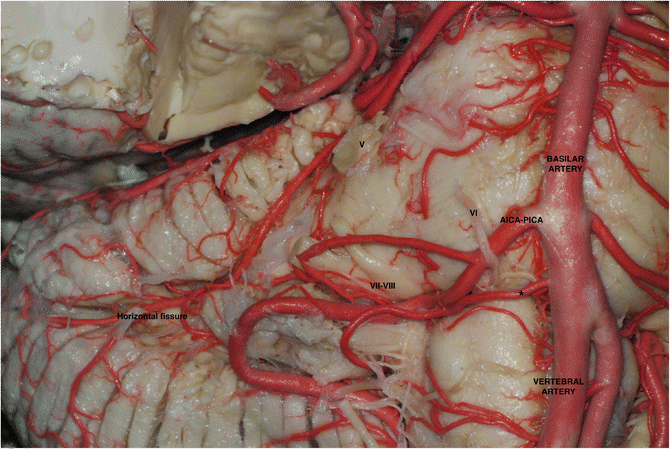
Symptomatic pICA disease was considered present when significant stenosis of the pICA was the likely cause of index middle cerebral artery (MCA) or anterior cerebral artery (ACA) infarction. Significant stenosis of the pICA was defined as > 50% diameter reduction to near-occlusion (artery beyond the stenosis has collapsed, but has remaining patency).
#Pica artery full form trial
Patients classified by the Trial of Org 10,172 in Acute Stroke Treatment (TOAST) as having large artery atherosclerosis with symptomatic proximal internal carotid artery (pICA) disease were enrolled. This study was a retrospective analysis of a prospectively collected database of acute ischemic stroke patients (within 7 days from stroke onset) between January 2013 and December 2017. The present study therefore investigated the association of lesion patterns of acute ischemic stroke, as shown by diffusion-weighted imaging (DWI), with the location of carotid plaques. Specifically, the nature and sizes of emboli from atherosclerotic stenotic lesions may depend on plaque location affecting the WSS inside the carotid artery. Moreover, the geometric properties of the carotid artery (i.e., bifurcation angle and radius), which are thought to regulate WSS, have been associated with plaque location in the carotid artery. For example, high wall shear stress (WSS) is associated with plaque formation at the apex of the carotid artery and low WSS with plaque formation at the bulb of the carotid artery. In addition to these general risk factors, hemodynamics may also affect the location of plaque within the carotid artery. Īlthough atherosclerotic plaque of the carotid artery is associated with old age, male sex, and hyperlipidemia, these risk factors have not been associated with specific plaque locations in the carotid artery among individual patients. Blood flow may be an important factor affecting lesion size and pattern because it can influence the activation of platelets and the coagulation cascade and dislodge thrombi. These risk factors, however, have not been associated with the distribution and size of these ischemic lesions. Thromboembolism due to rupture of ulcerative plaque as well as the degree of stenosis has been especially associated with ischemic stroke in these patients. A wide CCA-ICA angle is associated with low-body plaque of the carotid artery.Ītherosclerosis of the carotid artery is one of the major causes of ischemic stroke, with artery-to-artery embolism being the major stroke mechanism in patients with atherosclerosis of the carotid artery. Low-body plaques are more frequently associated with small scattered lesions, whereas high-apical plaques are more frequently associated with large lesions having additional lesions. The presence of low-body plaques (odds ratio: 3.106, 95% confidence interval: 1.105–8.728, p = 0.032) was independently associated with the small lesion-only pattern. 32.3%, p = 0.040), whereas high-apical plaques were more frequently associated with large lesions having additional lesions (38.7% vs. Low-body plaques were more frequently associated with small scattered or cortical lesions (54.8% vs. Hyperlipidemia was more prevalent and the common carotid artery (CCA)-ICA angle was wider (167.7 ± 10.4° vs 162.3 ± 9.8°, p = 0.019) in patients with low-body than high-apical plaques. Of the 93 acute ischemic stroke patients enrolled, 31 had high-apical and 62 had low-body plaques. Factors associated with plaque location and lesion pattern, dichotomized by size, were investigated. The geometric parameters of the ICA (angles between arteries) were measured, and ischemic lesion patterns were classified according to the number, location, and size of the lesions. The carotid plaque location was divided into high-apical and low-body types. Ischemic stroke patients with symptomatic proximal ICA disease (> 50% diameter stenosis) were enrolled. This study hypothesized that the atherosclerotic ICA geometry and plaque location would be associated with lesion pattern in patients with acute ischemic stroke.

Artery-to-artery embolism is the major stroke mechanism in patients with atherosclerotic carotid disease. Atherosclerosis of the internal carotid artery (ICA) is an important cause of ischemic stroke.


 0 kommentar(er)
0 kommentar(er)
